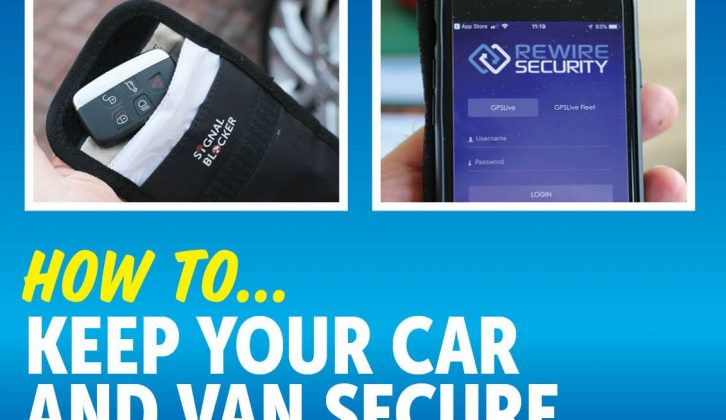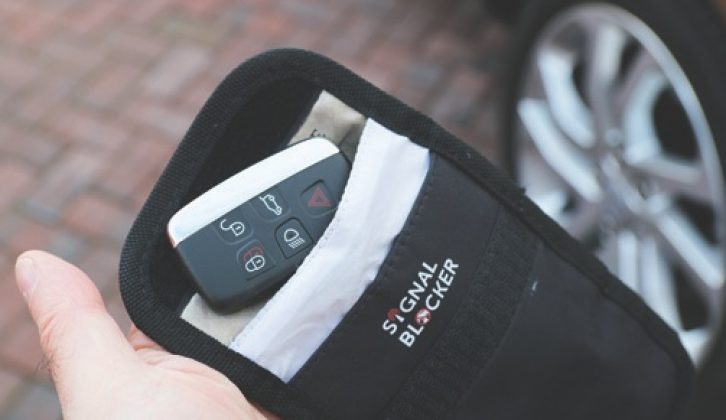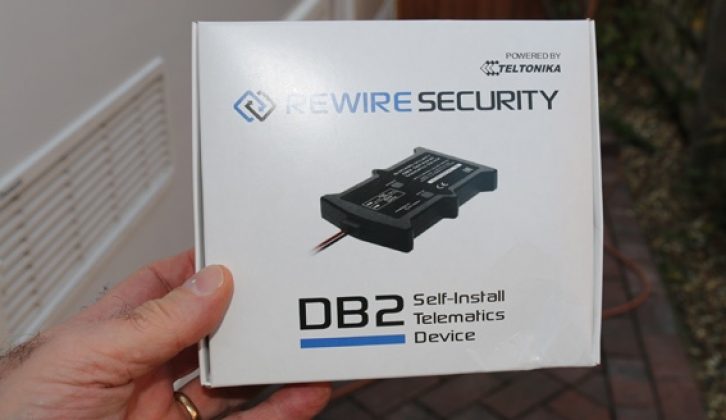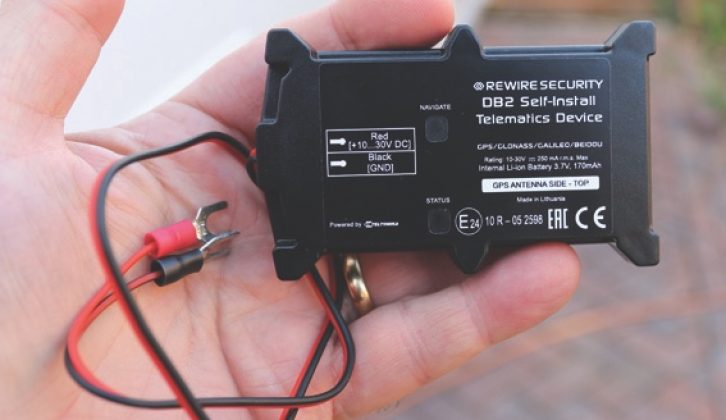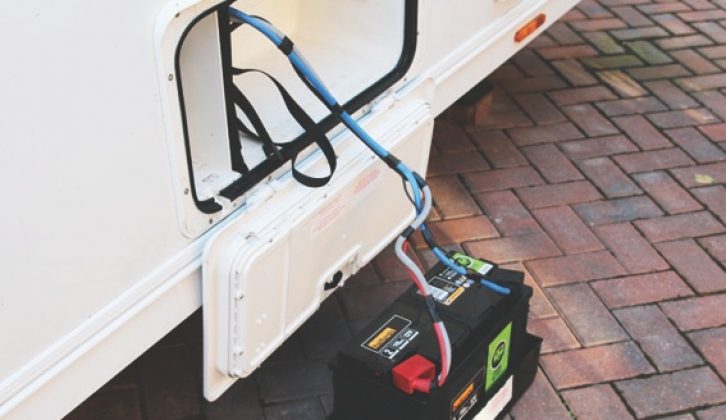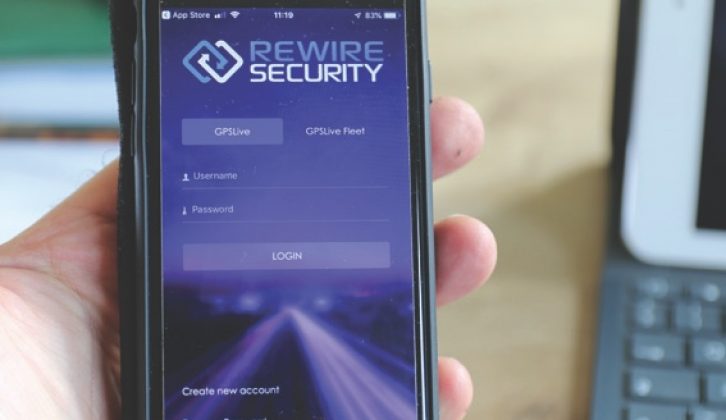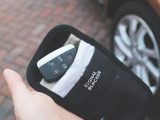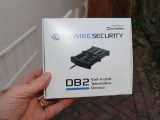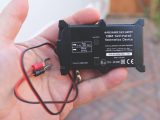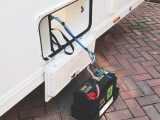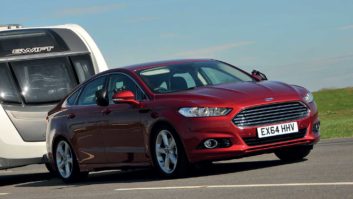It’s a rather sad reflection of our society these days that we are obliged to protect our possessions against thieves.
It’s a bit of an arms race, too – just as the manufacturers think that they’ve solved the problem with technology, along comes another criminal who’s found the means of defeating that particular technology. And so it continues.
It’s fair to say that caravans traditionally haven’t been the most tricky vehicles to steal: window catches can almost seem to be made of jelly, door locks don’t always feel secure, and so on.
Unfortunately, until caravan manufacturers do something about that, we’re stuck with it and there’s not a lot that we can do about break-ins.
One reassurance, though, is that when caravans are being kept in storage, there’s not usually much of great value left inside. Of more importance is doing as much as you can to prevent the whole caravan being stolen: something that happens far too often.
Our caravan has an Al-Ko hitchcock fitted, and a factory-fit monitored alarm and tracker. While experience tells me that this is an excellent system, the cost of the annual subscription exceeds any insurance discount that might be offered.
So, are more cost-effective options available? The simple answer is yes, and we’ll have a look at one tracking device later. However, if you’re going to fit such a unit for insurance-saving purposes, you’ll need to check with your insurer to see if they have any stipulation on the type of tracker that must be fitted.
Secure your keys
Still on the subject of vehicle theft, many modern cars come with keyless locking/unlocking and ignition systems. This is very convenient most of the time, but the downside is that our light-fingered friends can steal many expensive vehicles pretty easily.
Basically, they’ll find a vehicle they want to steal, then scan for a signal emitted by the car’s key. The owner may believe the keys are secure in a drawer inside the house, far from the car, but this isn’t enough.
The keys are then cloned, and it’s bye-bye car.
Carrying out a little research on this subject led to me buying a couple of mobile telephone signal blocking pouches (aka Faraday bags) for our car keys.
These are relatively cheap and fit in a pocket (or handbag) with your keys secure inside. And they work very well indeed.
With the keys in my hand or my pocket, as soon as I touch the door handle, it unlocks. But simply put the keys inside the pouch, and even if I place it right next to the handle, the door won’t open.
I also tried putting the keys inside an old tin, and that had exactly the same effect.
Fit a tracker
Returning to the caravan and the tracker; I was recently in contact with Ekim Sariburdak at Bristol firm Rewire Security, who sent me one of their DB2 Self-Install GPS Trackers, which works in conjunction with a mobile phone app (other makes are available).
Originally for cars, vans and motorcycles, there is absolutely no reason why the DB2 couldn’t be fitted to a caravan.
The DB2 currently retails at £59.99. There is an additional cost for the use of the device/app, ranging from £4.99 per month to £59.99 for a year, and if accepted by your insurance company, the device may well pay for itself in any discount offered for having a tracker.
So what’s in the box, and how easy is it to fit?
You get the pre-wired DB2, with fitting and operating instructions that are very easy to follow, and a card with your personal log-in instructions.
The only tool you will need to fit the device is a spanner (or spanners) of the correct size to loosen the leisure battery terminal connections.
The DB2 must be fitted so that the logo side is facing upwards – this is where the GPS receiver is located.
As luck would have it, there was just enough room for the unit to sit flat on top of the battery in our battery locker.
First, remove the battery from within the locker, then loosen both terminal bolts (if your caravan has the clip-on type terminals, you might have to adapt how you attach the wires from the DB2, but that should be straightforward).
There’s no need to remove the terminals from the leisure battery, though.
The forked connector on the red wire from the DB2 slots over the bolt on the positive terminal between the terminal and the securing nut. Once this is done, retighten the nut.
Now you can simply repeat the process with the black wire and the negative terminal.
When both wires have been connected, the green ‘Status’ LED light on the DB2 device starts flashing, indicating that the unit is powered correctly and is operating.
The green ‘Navigate’ LED light will initially be solid. This indicates the unit is searching for a GPS signal and, once the signal has been established, the LED will also start flashing.
The DB2 easily attaches to the top of the leisure battery using the prefitted double-sided tape (on the opposite side to the logo and LEDs), then the battery should be reinstalled in the locker.
The next thing that you need to do is to visit the tracking website at www.gpslive.co.uk and download the app to your mobile phone (Android and Apple versions are available).
Check your status
With the app downloaded, you simply log on using the details given on the card supplied with the DB2.
As soon as I’d done that, the ‘status’ of our unit appears on the screen. Fortunately, it showed that the caravan was ‘stopped’ (that is, not moving). Selecting the map display showed me exactly where the DB2 was. You can alter the map settings, both in the display (map or hybrid aerial photo) and zoom in or out.
You can also set up some alerts, so that you are notified if the unit moves, if the power is cut and so on. I’d originally set up the device before fitting the battery back in the caravan, and when I lifted the battery (with the DB2 attached) to put it back in the locker, I received an alert, so it is very sensitive.
As I said earlier, the DB2 unit is designed mainly for use in other vehicles, so there are some functions that you’re not likely to use when it is fitted to a caravan. Others, however – such as tracking the route the vehicle has taken – might be of interest, just for curiosity and keeping a log of the distance your caravan has travelled.
Although it isn’t quite as sophisticated as some factory-fitted units, the DB2 works well and should alert you to any unauthorised movements of your caravan.
Of course, it would also be possible to hide the unit away so that it would be much harder to find, but I suspect that few thieves initially start looking for the tracker units when they are in the process of trying to steal a caravan, so hopefully would overlook the obvious.
I must admit that I was very impressed with how quickly the DB2 picked up the GPS signal and warned me of the unit being moved. I’m now quite tempted to get a second device and fit it to our car!
If you're going to fit a tracking device for insurance-saving purposes, you'll need to check with your insurer to see if they have any stipulation on the type of tracker that must be fitted
